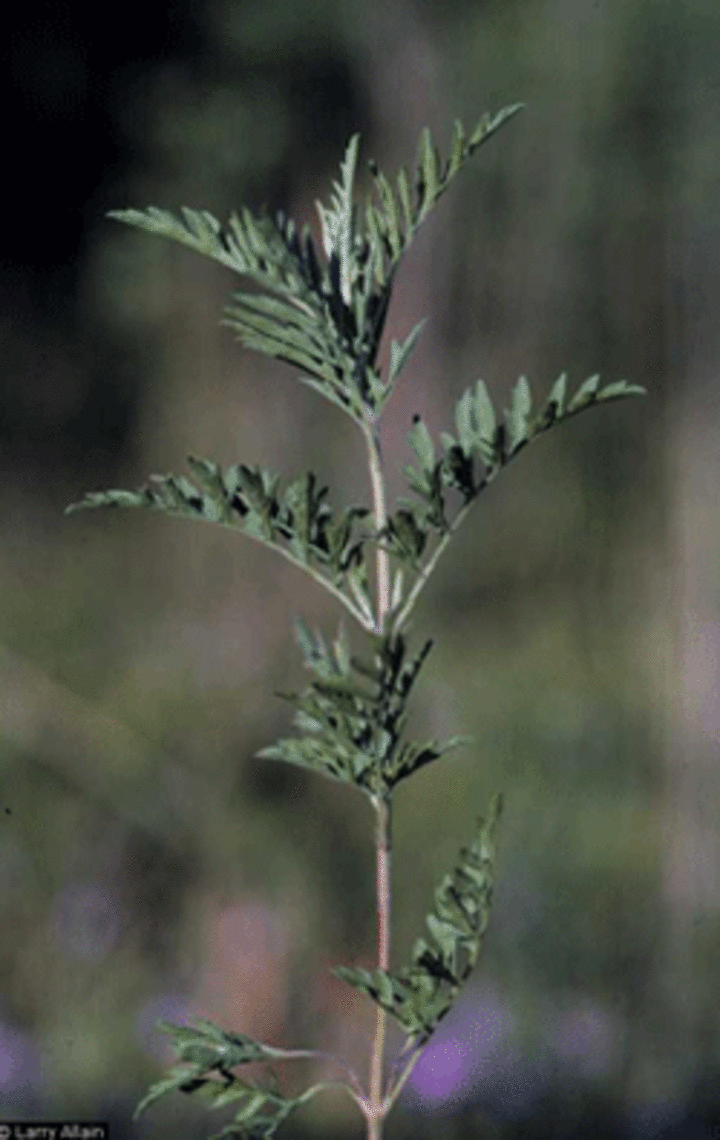May 29, 2009

|
| Western ragweed (Ambrosia psilostachya) (Larry Allain @ USDA-NRCS Plants Database) |
Western ragweed (Ambrosia psilostachya) is a common native weed in northeast Nebraska's rangeland, prairie, and disturbed sites in all soil types. It is a perennial forb from the sunflower family (Asteraceae) that reproduces both by seed and rhizome.
Growth Habit
Rhizome is a horizontal creeping root system growing in the top 5-10 inches of soil. The plants usually grow in sparse groups (patches or clusters). Stem is very erect, up to 3 ft tall, with many branches and long hairs giving the stem a coarse feeling. Leaves are alternate on the upper part of the stem, opposite on the bottom, with many divisions and teeth. As with many other plant species, the overall growth and development depends on the amount and timing of rainfall. In Nebraska western ragweed flowers from July to October, with greenish-yellow flowers positioned on the top of the main stem and branches producing an inch long bur-like fruit with a single seed in each bur.
Uses
Western ragweed provides forage for deer and the fruits are an important food source for upland game-birds, wild turkeys and songbirds. Native Americans also made a tea from the whole plants to treat colds and cramps. Western ragweed has almost no value to livestock because of its low palatability. With other forage limited, it may be eaten. Pollen produced in late summer causing late summer hay fever in many people, due to presence of volatile oils, which can also cause skin irritation. Due to its low value for livestock forage, it is a concern to livestock producers and ranchers.
Control
Ragweed can be managed with mechanical or chemical options.
Mechanical. Mow plants when they are 4-6 inches tall to reduce the population considerably for the season. Mow once or twice per season depending on the amount of rainfall. If the season is dry, one mowing in mid-June will be effective, due to lack of moisture for weed regrowth. If the season is wet, mow again in July or August.
Chemical. Herbicides also can provide season long control. Apply herbicide when ragweed plants are 3-5 inches tall. Effective herbicides and their rates per acre include: Salvo (12 oz/ac), 2,4-D-Ester (1 qt/ac), Grazon P+D (32 oz/acre), Weedmaster (32 oz/ac), Ally (0.25 oz/ac), and Vista (22 oz/ac).
Stevan Knezevic, Extension Integrated Weed Management Specialist
Haskell Agricultural Laboratory, Concord
